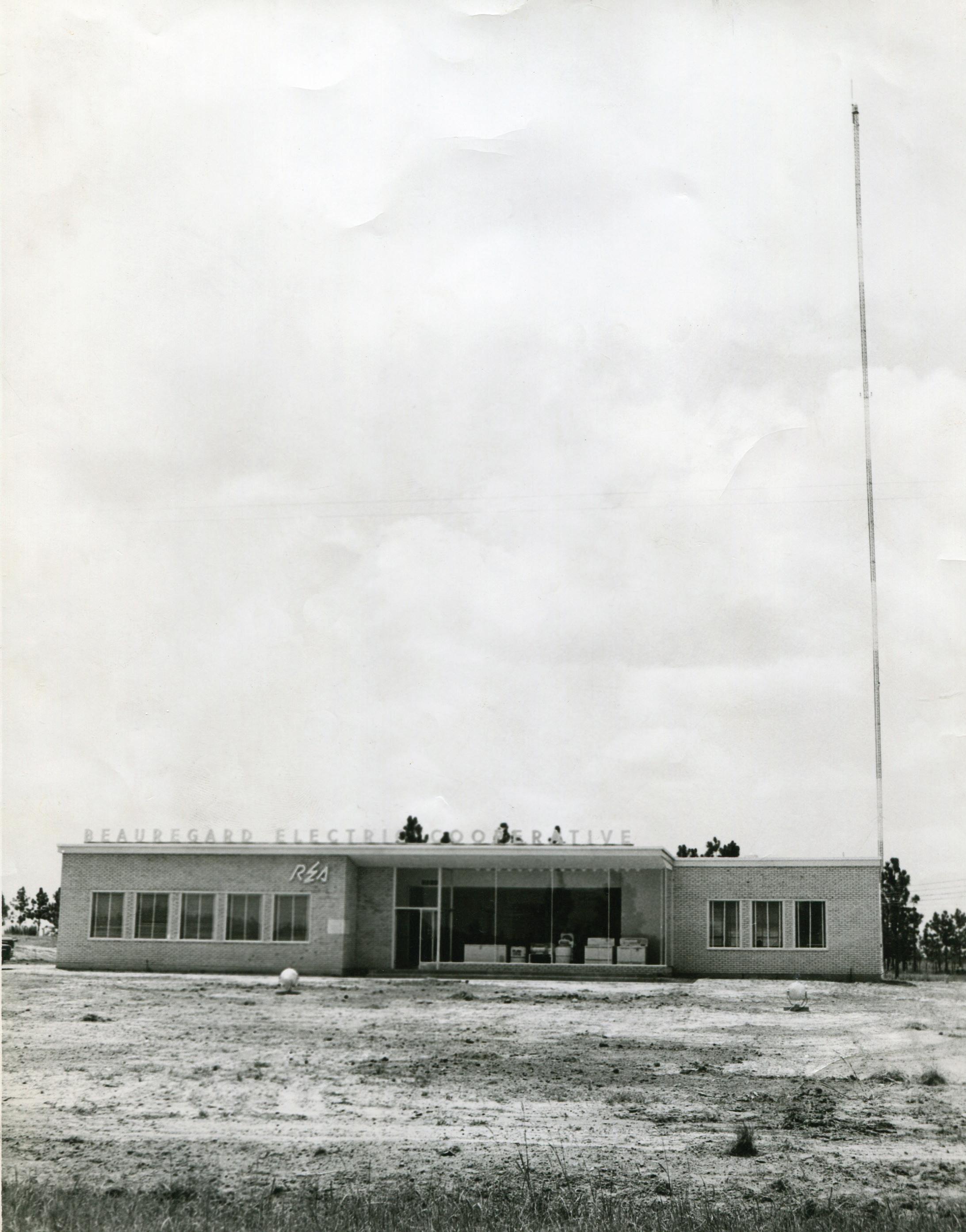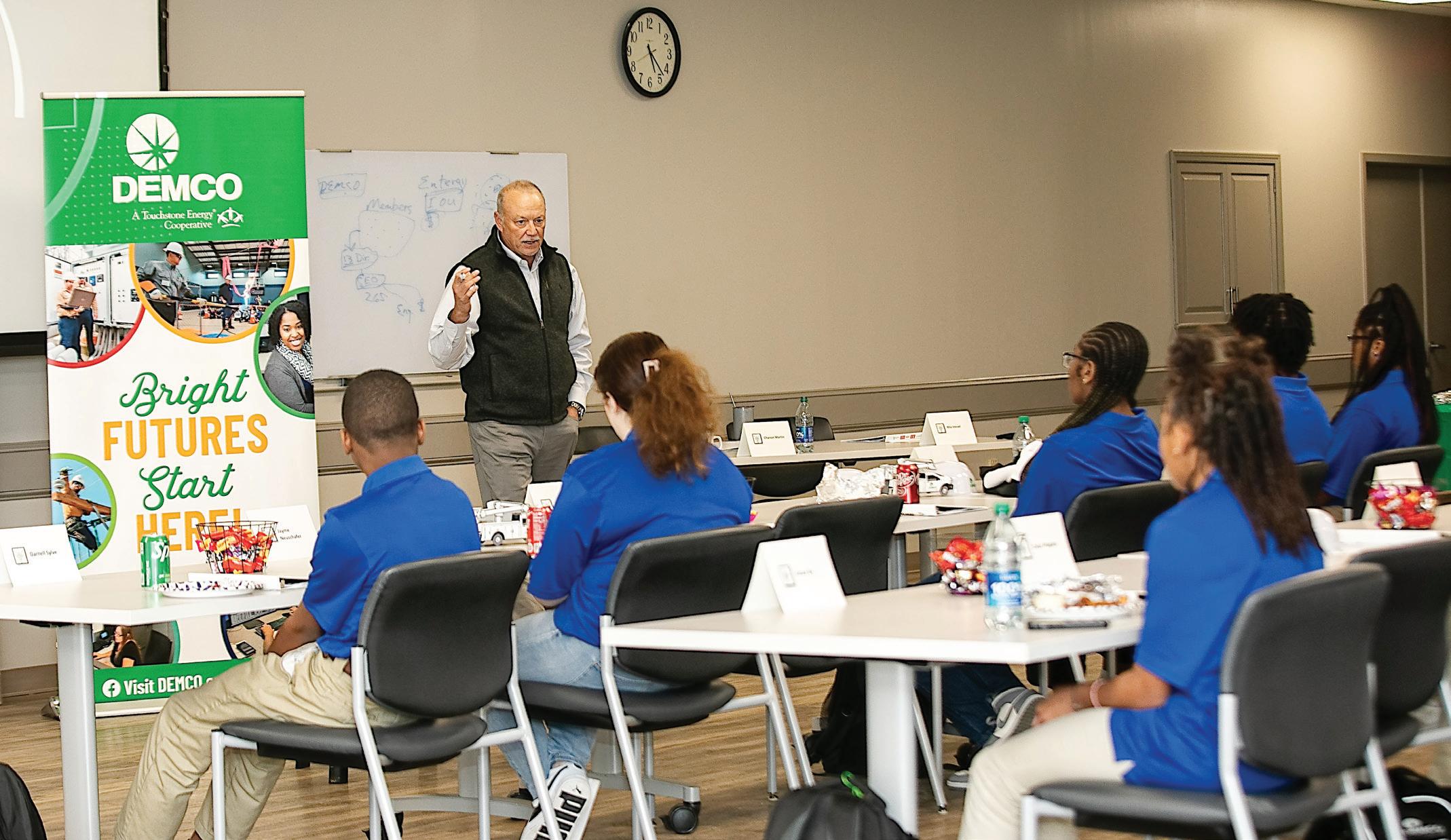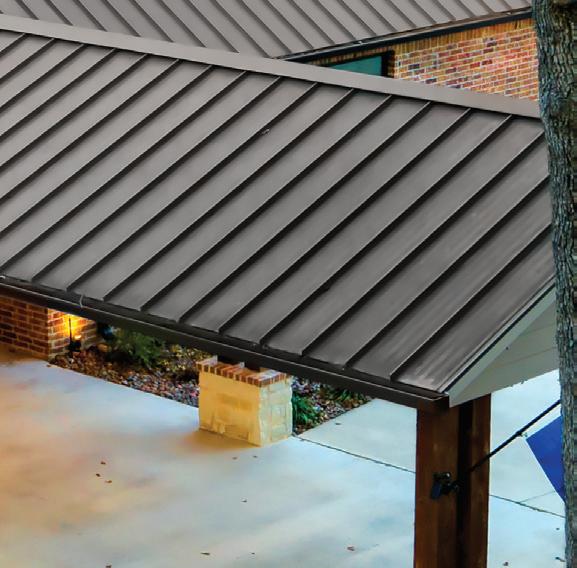Louisiana Country



















From the French Quarter to the hometown of Mark Twain, experience the best of this legendary river. On an 8 to 23-day journey, explore Civil War history and travel to the epicenter of American music as you cruise in perfect comfort aboard our brand new American Riverboat™ Small Ship Cruising Done Perfectly























Electric cooperatives invest in modernizing infrastructure, implementing innovative grid technologies and adopting best practices in maintenance and operations to enhance reliability.
Additionally, they often engage in community outreach and education to ensure members understand the importance of energy conservation and the cooperative’s efforts to maintain a reliable power supply.
Recently, your Louisiana electric cooperatives formed a first-of-its-kind coalition to solve the grid resilience challenges threatening the state’s economic vitality and protect remote, rural, disadvantaged communities from increased climate-related threats and external risks compromising energy safety, reliability and resilience. All six Association of Louisiana Electric Cooperatives member cooperatives in the coalition have been affected by at least one, if not more, named disasters in the past three years, including hurricanes and severe winter storms.
The coalition applied for a grant to implement grid enhancements. If this
coalition is selected by the Department of Energy, Louisiana Electric Cooperative consumer-members will see the benefits of these enhancements at a third of the cost, thanks to the government grants.

Louisiana electric cooperatives aim to create a more resilient and robust electrical grid, ultimately reducing the frequency and duration of outages by combining the following strategies: investing in infrastructure upgrades, implementing smart grid technologies, grid modernization, vegetation management, microgrids, investing in resiliency planning, remote monitoring and control, enhanced communication and coordination, education, and preparedness.
As part of the Bipartisan Infrastructure Law, the Grid Deployment Office is administering a $10.5 billion Grid Resilience and Innovation Partnerships Program to enhance grid flexibility and
CEO Addie Armato
DIRECTOR OF LOSS CONTROL Aarron Graham
SAFETY COORDINATOR Ricky Melancon
COMMUNICATIONS AND DIGITAL MARKETING
SPECIALIST Conley Bourgeois
ADMINISTRATIVE ASSISTANT Rhianna Garon
CREDIT UNION
Robin Plunket, manager
Jody Overhultz, representative
President Dennis Glass
Vice President Michael Heinen
Secretary/Treasurer Roger Dale DeHart
BEAUREGARD
Trent Buxton
CLAIBORNE
Mark Brown Lane Davidson
DEMCO
Daniel Berthelot Richard “Dickie” Sitman
JEFF DAVIS ELECTRIC COOPERATIVE INC.
Michael Heinen Byron Hardee
SOUTH LOUISIANA ELECTRIC COOP ASSOCIATION
Trevor Benoit Roger Dale DeHart
WASHINGTONST. TAMMANY ELECTRIC COOP INC.
Joe Jarrell Dennis Glass
Associate

improve the power system’s resilience against growing threats of extreme weather and climate change.
These programs accelerate the deployment of transformative projects that help ensure the reliability of the power sector’s infrastructure so all American communities can access affordable, reliable, clean electricity anytime, anywhere.
In the wake of several natural disasters, industry leaders and elected officials continue to focus on the importance of reliability. Our core values have always been providing safe, affordable, reliable electricity. While there is no guarantee the coalition will receive these funds, your Louisiana electric cooperatives continue to seek creative, low-cost solutions to improve your quality of life.






BOARD OF DIRECTORS
Donald Bush | District One
Dale Peterson | District Two
J.R. Hickman | District Three
Stoney Doyle | District Four
Joey Rogers | District Five
Trent Buxton | District Six
Doug Sonnier | District Seven
Diana Backhaus | District Eight
Tommy Cryar | District Nine
BEAUREGARD ELECTRIC CO-OP LEADERSHIP
Brian Zelenak | Interim General Manager
Kay Fox | Vice President of Marketing and Member Services
Ashley Mazilly | Vice President of Finance and Corporate Services
Kevin Aycock | Vice President of Engineering and Technical Services
Scott Deshotel | Vice President of Operations and Construction Services
BEAUREGARD ELECTRIC OFFICES
Main office
1010 E. 1st St.
DeRidder, LA 70634
Phone: 800-367-0275
Moss Bluff
975 N. Perkins Ferry Road
Lake Charles, LA 70611
Phone: 337-855-6684
New Llano
12542 Lake Charles Hwy. Leesville, LA 71446
Phone: 337-239-3451
www.beci.org
Volume 41, Issue 2
Louisiana Country (USPS 473-180) is published bimonthly by the Association of Louisiana Electric Co-ops Inc., 10725 Airline Hwy., Baton Rouge, LA 70816, in partnership with Pioneer Utility Resources.
Annual Subscriptions: Members $2.30. Nonmembers $5.
Postmaster: Send form 3579 to 10725 Airline Hwy. Baton Rouge, LA 70816.
Periodicals postage paid at Baton Rouge, Louisiana 70821 and additional mailing offices.
As we celebrate our 85th anniversary this month, I am proud to be a part of the electric co-op model and proud of those who brought electricity to our area when the for-profit companies refused to.
Beauregard dates back 85 years and each generation has made our cooperative stronger. Our employees and member-owners are our priority.
As Beauregard Electric Cooperative’s general manager, I want to assure our employees and members that I am committed to operating our cooperative with the highest ethics and business practices. I am proud of our employees, many who have worked at the co-op for decades and operate with the same high standards.
BECi has grown into a more than $150 million per year member-owned cooperative that supports 125 active employee families and many retirees. The co-op works to provide the best customer service at the lowest possible prices for electricity. We have faced obstacles, especially over the last several years as our linemen and customer service teams have been on the frontlines fighting droughts, wildfires and hurricanes.
Most recently, our power provider enforced a force majeure in our contract that increased the cost of electricity to members. Thankfully, it’s been lifted, and we begin again to find ways to keep electric bills as affordable as possible. However, the sudden and unexpected fuel clause increase hurt the co-op and its member-owners, as well as other cooperatives with the same or similar contracts with our power supplier.
BECi received and paid its January and February wholesale energy bills under protest. This continues to help preserve our legal rights and options while we await a response to our request for documentation supporting the force majeure and purchasing practice of our energy provider. We will press on, diligently representing our members to make sure the terms and rights provided to us within the contract are protected.
Simultaneously, we are switching wholesale energy providers to a new company that BECi has formed with four other Louisiana Electric Cooperatives called 1803.
The final transition from our current provider to 1803 will occur in April 2025. Until then, our existing contract remains in place.
1803 is a wholesale provider that is nearly 40% owned by BECi, but is regulated by the Louisiana Public Service Commission. That gives us two seats on 1803’s board table and provides for regulatory oversight, which our current 25-year-old contract does not.
Along with our 1803 partner cooperatives, we decided to sell some smaller transmission interconnection assets to 1803 that connect us to the bulk transmission system. That transition will take time, but it makes 1803 a future transmission asset owner, which will also provide long-term benefits to BECi and its members.
As we face new challenges, we must look for ways to improve service and be open to doing things differently. In that vein, we are working on a project to improve how we communicate with members.
We are evaluating our website, newsletter, use of social media and internal employee communication. We are early in the process but are excited about the project’s possibilities. Our goal is to make beci.org the center of the co-op’s communication channels.
We all desire open, timely and effective communication, and BECi is working to make sure that happens. We will make our website the “hub” for information updates.
BECi employees appreciate your business during the past 85 years and look forward to serving you for the next 85 years.
Beauregard Electric offers its members an opportunity to win the co-op’s Lucky Account Number Contest by publishing four account numbers somewhere on pages 20-21 of Louisiana Country. The account numbers are listed within the story on those pages, not on the magazine cover. To win, you must locate your account number (listed on your electric bill) on these pages and then contact the co-op. To claim your prize, call 800-367-0275 or 337-463-6221 by March 15.

I leave my mom’s home and walk the short distance to the Old House. It’s sunset, and our homestead, built in 1892, stands starkly against the background of Crooked Bayou swamp.
I hurry in from the cold and build a fire in the middle room fireplace, my favorite room, where I spent countless hours with my grandmother.
The Old House is more than 130 years old and hasn’t been occupied since the 1970s. Despite that, the old lady is in fair shape for her age.
However, it’s been dark, empty and lonely for many years.
Sitting by the roaring fire, I have an odd thought, “Why don’t I go through the house and see which lights work?”
Amazingly, as I pull the light cords, every light comes on.
I walk out in the front yard, and I’m amazed. The Old House is aglow with light.
The Old House is alive again after all these years of darkness.
I can’t recall the last time I saw it like this.
I take a chair to the front yard and soak in that eerie time of day when dusk slides into nightfall. This gathering darkness only serves to illuminate the Old House.
I recall coming out of the swamp after dark as a boy, walking in the general direction of home until I saw the lights of the Old House. I now knew where I was. I was headed home.
I return to my mesmerizing fire, carefully easing onto a rickety cowhide chair as my dog, Bandit, takes his place by the hearth.
I have a vivid imagination. That’s where 11 books and novels will lead you.
What happens next isn’t a dream or vision. It’s just imagination from deep in my heart. It wasn’t real, but I wept like it was:
I hear footsteps on the wooden porch. I step outside to see generations of my family emerging from the dark. They’re all healthy and alive again—several walk up from the swamp, smelling of squirrels and Garrett’s sweet snuff.
Another shadow appears from the upland east 40 carrying an armload of rich pine kindling. My grandfather walks by with a bushel of roasting ears.
Headlights appear on the gravel road, and other ancestors arrive in old cars with fiddle cases, guitars and homemade casseroles.
They crowd into the places where I knew them best: the log room, the old kitchen and the two bedrooms sharing a double fireplace. Most congregate on the dogtrot porch, where they tune their instruments. As always, it takes forever. My father—healthy again— stands among them, poised to launch into one of his old ballads.
The aroma of dark roast Seaport coffee wafts from the kitchen. It’s mingled with the laughter of country women working together. As they come in and out, the sweet sound of swinging screen doors fills the air.
They’re all here. I’m surrounded by my grandparents, greatgrandparents, and a host of uncles, aunts and cousins.
I do not recognize several people, but they smile and seem to know me.

I realize they’re the ancestors of this house I never knew. There are John and Sarah Wagnon—who built this old house—and their daughter, Louise. They lived their entire lives here long before my time.
These are the pioneers who homesteaded these 80 acres, built the log house, cleared the land, and laid the foundation for what the Old House is today.
But the foundation they laid was much more than logs and boards. It’s a legacy passed down to me and the generations to follow. A legacy of the land, a legacy of enduring family ties and a legacy of love.
Next, in my dream, other cars arrive. It’s my sons, their wives and my nine grandchildren.
They mix and mingle with family members they only knew by name or story.
I think about the old Southern song, “Will the Circle be Unbroken?” Tonight, that circle is complete at the Old House. We’re all here.
I’m not sure how long this reunion lasts.
I look up, and the fire has died down. Although the lights are on, the Old House is empty again.
It’s just me and Bandit, but I don’t feel lonely or sad. I feel a warmth from the legacy of my deep roots in these piney woods.
I cover the fire and walk through each room, pulling the switch cords until the Old House is once again dark.
Before stepping away, I flip the porch light back on.
Just in case someone is arriving late at the Old House.
The Old House that sits on the edge of Crooked Bayou swamp.
Curt Iles

Curt Iles lives in Central Louisiana. He is the author of 11 books about rural Louisiana. Curt is a graduate of Louisiana College and McNeese State University. He has served as a teacher, coach, school principal, camp director, missionary, and full-time writer and speaker. To see more work by Curt, visit www.creekbank.net.














Help Fund a Scholarship, Gain a Chance to Win!
Donate $1 to the Sandy Stockwell Cooperative Youth Leadership Scholarship Fund, and you could win a portable Hisencn flat top propane grill.
To buy a ticket, visit your electric cooperative.
The drawing is in July at the Association of Louisiana Electric Cooperatives’ annual meeting banquet in Baton Rouge.
You do not need to be present to win. The winner will be contacted by phone.



The Annual Meeting of Members of Beauregard Electric Cooperative Inc. will be at 10 a.m. Saturday, March 23, at the BECi office in DeRidder. A special drawing for door prizes will also take place.
Election of directors will be conducted by mail in accordance with the bylaws, which provide for rules to be established by a credentials and election committee of BECi members. The business of the meeting will be outlined in the bylaws.

Reading of the notice of the annual meeting and proof of due publication of mailing thereof, or the waiver or waivers of notice of the meeting, as the case may be.
Reading of unapproved minutes of previous meetings of the members and taking of necessary action thereon.
Presentation and consideration of reports of board officers, directors and committees.

Report of the elections committee on the balloting for the election of directors.
Unfinished business.
New business.
Adjournment.
For more information, call 337-463-6221. BECi bylaws can be found at www.beci.org.


BECi offices are closed March 29 for Good Friday.

Cleco Cajun LLC




















































































































































































Proud to serve Beauregard, Claiborne, Concordia, Jefferson Davis, Northeast, Pointe Coupee, SLECA, SLEMCO and Washington-St. Tammany electric cooperatives.











































By Cheré Coen
Panderina D. Soumas calls Bossier City home, but her roots run deep in New Orleans cuisine. The Big Easy’s her hometown and that of her ancestors. She credits those family members for her love of Creole cooking and what she incorporates into the food products she sells under Heritage Creole Creations.
Panderina sells a Creole seasoning blend, packaged food mixes, a cookbook of Creole recipes, both new and old, and some of the creamiest pralines in Louisiana. What she doesn’t sell is Cajun or trendy.
“I try to be different than others,” Panderina says. “It’s strictly Creole.”
Chef Pan, as she likes to be called, was raised with typical New Orleans dishes, such as red beans and rice, jambalaya and “gombo,” the West African spelling of gumbo meaning okra. Enslaved Africans brought okra seeds from their homeland, and many attribute the name of gumbo, either spelling, to those early Louisianans.
Louisiana Creole cuisine is a mixture of African influences as well as Spanish, French and Native American. When she was growing up in New Orleans, her use of cumin and curry blended Spanish influence with her family’s West African heritage. One grandmother added Caribbean flair to her gumbo roux.
“My grandmother made roux from scratch, and she dropped in a cinnamon stick at the end for a few minutes,” Chef Pan says.
Her New Orleans backyard produced much of what her family used in their recipes. In addition to growing okra, they had pecan, bay leaf and lemon trees. Her grandmother dried peppers and used them and bay leaves when she boiled her rice.
There was always something cooking that filled the house with a delicious aroma.
“My grandmother would say in her patois, ‘If you can’t smell the food, don’t eat it,’” Chef Pan says with a laugh.
Her father’s military career took the family many places, but the culinary entrepreneur settled in Bossier City. It’s where she creates her products and ships them across the country.
One of her most popular items is the Creole Explosion Seasoning Blend. She won’t name the ingredients, but typical of her heritage, it includes cumin, cinnamon and a little curry. It’s got a bite, but there’s more flavor than heat.
“I named it explosion for a reason,” Chef Pan says, adding that she puts a little seasoning packet in her food mixes as well. “It’s a seasoning you can use on everything.”
When Chef Pan first moved to Northern Louisiana, she noticed a lack of her hometown’s favorite—and famous—specialty.
“Pralines are more of a South Louisiana thing,” she says. “A lot of people here called them peanut patties.”
Her Creole origins called them by a different name, as well. “Most people of Creole heritage would call them ‘pah-leens,’ with the R silent,” she explains.
When she added Chef Pan’s Creole Pecan Pralines to the lineup, people started demanding the sugar and pecan goodness.
“It’s an art,” she says of mixing the sweet combination of sugar, cream and pecans. “You have to watch that sugar and cream because it can burn. And humidity plays a part. Sugar and dampness do not go together.”
As with all Louisiana dishes, how they’re created can incite passionate disagreements.
“I had an aunt who used regular milk, one who used evaporated milk and one aunt who used a little of both,” Chef Pan says.
The bottom line is the final product.
“Don’t want to toot my own horn but mine are pretty good,” she says.
She is working on a new website, but folks wanting to sample her products can reach her through her Facebook page: Panderina Soumas (Chef Pan). n
3-5 tablespoons cooking oil
1 pound of andouille sausage, sliced into rounds
1 pound boneless skinless chicken thighs, cut into bite-sized pieces
2-3 teaspoons of Creole Explosion Seasoning Blend
1 onion, diced
1 green bell pepper, diced
1 red bell pepper, diced
2 stalks/ribs celery, chopped
4-5 cloves of garlic, smashed and minced
3-4 bay leaves
1 14-ounce can crushed tomatoes
1 14-ounce can of petite diced tomatoes
2 teaspoons Worcestershire sauce
1 teaspoon file powder (optional)
11/2 cups of long-grain white rice, uncooked
3 cups of chicken broth
A few shakes of Big Easy Creole Hot Sauce
Sliced green onions and chopped parsley, to garnish
Heat 1-2 tablespoons of oil in a large pot or Dutch oven over medium heat. Season the sausage and chicken pieces with half of the Creole Explosion Seasoning Blend. Brown sausage and chicken in the hot oil until done. Remove with slotted spoon and set aside.
In same pot, add 2-3 tablespoons of oil. Saute the onion, peppers and celery until soft and transparent. Add the garlic and cook until fragrant. Stir in the tomatoes (crushed and diced), a few shakes of Big Easy Creole Hot Sauce, Worcestershire sauce, the remaining Creole Explosion Seasoning Blend, optional file powder and chicken and sausage. Cook for 2-3 minutes, while stirring occasionally. Last, add in the rice and chicken broth.

Bring to a boil, then reduce heat to low-medium simmer. Cover and let simmer on mediumlow for about 20 to 25 minutes or until liquid is absorbed and rice is fully cooked. Turn off heat, stir gently and cover with lid for an additional 2-3 minutes. Season with a little extra Creole Explosion Seasoning Blend, if needed, and remove from heat. Adjust spiciness with extra Big Easy Creole Hot Sauce. Serve immediately with sliced green onions and parsley for garnish.
















By Cheré Coen























Working for an electric co-op may seem straightforward—keeping the lights on for area homes, farms and businesses—but it requires skilled professionals, many of whom labor behind the scenes. While lineworkers work in any weather to repair and maintain utility poles, the office staff provides customer service, management, technical support, billing and more. Together, they bring customers the reliable and affordable service they deserve.
“In addition to who you see, the linemen, there’s a whole business support group behind that,” says DEMCO CEO Randy Pierce.






Randy started working for the Natchitoches Valley Electric Membership Co-op straight out of college and then worked for Cajun Electric Power Co-op for eight years. Before moving to DEMCO, he served as the CEO and general manager of the Association of Louisiana Electric Cooperatives for 22 years.
He values the variety of career opportunities co-ops offer, and he especially appreciates they are locally
owned, operated and governed by members of the communities they serve.
“The utility industry is a service industry and the co-op industry even more so,” Randy says of his not-for-profit, member-owned corporation. “We provide critical electric services in areas that couldn’t get it otherwise.”
It’s because co-op staff members work so closely, including during natural disasters, that a cooperative feels like family.
This tightknit connection is one reason employees consider their roles more than simply jobs—they have careers.
Heath Lemieux began working for Jeff Davis Electric Co-op after graduating high school, starting as a helper to lineworkers in Johnson Bayou near the Gulf of Mexico. He now works in the co-op’s office in Jennings. Heath has performed many duties over his 26 years, but one year stands out. When Hurricane Rita devastated his home in 2005, Jeff Davis provided him with a camper he could live



in until he could relocate. Other co-ops donated funds and materials to assist him and others affected by the storm.
“We’re a small co-op, but they treat us like family,” Heath says. “It’s been a great place to work. They’ve always taken care of me.”
Shannon Soudelier also began his career as a helper, working for South Louisiana Electric Cooperative Association after finishing high school in August 2005.
“When I first started, I didn’t know what



a lineman was,” he says with a laugh. “I thought it was a light switch in my house.”
Right after Shannon took the job, Hurricane Katrina barreled into New Orleans, followed by Rita a month later in Louisiana’s southwest corner. Shannon met many co-op members from around the state and country who arrived to help and was amazed at how quickly they restored electricity to a struggling state.
“Working for a co-op, it’s a family,” he







says, including those who are only in-state to help during a disaster. “You might talk to some people once or twice, but it’s like you’ve known each other all your life. If you need help, it’s a brotherhood. They’re just a phone call away if you need something.”
ALEC raised more than $2 million after the twin storms of 2005, Randy says, and co-ops throughout 30 states sent help.
“We move resources where they need to be,” he says of the nationwide coalition of cooperatives. “We form relationships during disasters that sometimes last a lifetime. For electric co-ops, it’s just a way of life.”

Julie Burns didn’t know what the job of a meter reader entailed when she signed up 45 years ago to work with DEMCO. Today, she’s a meter reading technician in Greenwell Springs. In addition to the great job benefits, such as on-the-job training, medical benefits and tuition assistance, Julie appreciates the opportunity to give back to her community. Each year, DEMCO gives its employees an opportunity to serve in the community.
“It’s something we enjoy, and it also helps somebody else,” she says. “We try to give back to the community.”
Randy agrees that working at a co-op offers more than just a paycheck.

“It’s great pay but also nonprofit work,” he says. “While we don’t have a profit motive, our goal is to provide quality service. At the end of the day, you’ve provided work in the community that’s needed. And there’s a lot of things you can do over and above to help your community.”
Because electric cooperatives provide an invaluable service to communities, their employees have the peace of mind that comes with job security.










“Co-ops aren’t going anywhere,” says Shannon, who’s worked for SLECA for 18 years. “The public needs electricity. You’ve got to be there to keep the lights on. It’s an awesome career. As a lineman, you’ll have a career forever.”
Verdie Mae Knight marked 65 years at Washington-St. Tammany Electric Cooperative last November, and she isn’t thinking about retirement anytime soon. After high school, she knew she wanted to remain close to her family’s dairy farm but was unsure which path to take. She says her life started when the phone rang, and WSTE asked her for an interview.
“That was the happiest day of my life,” she says. “It’s been a wonderful career for me.”
She’s now a WSTE billing supervisor and cherishes helping her community.
“I think it’s a really good opportunity to work for a co-op,” Verdie says. “I’ve met a lot of people. I’ve enjoyed working with them.”
Darrell Crumpler was lead lineman at Beauregard Electric Cooperative and the 2023 Outside Employee of the Year. He started at BECi in 1992 and retired in February. He enjoyed the work, benefits, and his relationship with the people he served and coworkers.
“It’s just a good job,” Darrell says. “The benefits are unmatched, and there is nothing like working for a co-op.”
Considering Working for a Co-op?
Heath recommends thoroughly examining what a co-op job entails. Because lineworkers must work through any weather at all hours of the day, the job can take a toll on both lineworkers and their families.
“Linework is not for everyone,” Heath says. “It’s a great job, but you have to be built for it. You need to be fit.”
Other positions to consider include engineering, human resources, marketing, accounting and more.





“If I were to recommend someone to pursue a job at DEMCO, I think one of the most important benefits we have going today is the new technology for the future,” Julie says. “Learning something new daily in our job is a great benefit to myself and mostly for our company and members.
“Do it, definitely,” Julie concludes. “You will have a good, stable future.”
Employees can move to other cooperatives and bring their benefits with them, Randy says.


“One of the great things about working for a co-op is there are over 900 electric co-ops around the country,” he says.
“That’s a huge advantage.”







































Each year, the Beauregard Electric Cooperative Inc. Board of Directors selects co-op members to oversee the board’s annual election process. Their job is to validate the board’s nomination of petitions for the current election year, to confirm mail ballots are valid and verify the votes of BECi members.



Louisiana Electric Cooperative representatives visited the Midcontinent Independent System Operator facility in Little Rock, Arkansas, in October. MISO is an independent, not-for-profit, member-based organization focused on managing the flow of high-voltage electricity across its region and facilitating one of the world’s largest energy markets. TOP LEFT: Representing Jeff Davis Electric Cooperative, from left, are John Berken, Heath Lemieux, Kevin Sonnier, Reggie Murphy, Eric Gautreaux, Johnathan Nunez, Anya Killmer, Byron Hardee and Thomas Precht III. TOP RIGHT: Representing Association of Louisiana Electric Cooperatives, from left, are Conley Bourgeois, Addie Armato, Aarron Graham and Don Caffery.







The Natchez Trace has many scenic stops, but one stands out for its otherworldly beauty. Cypress Swamp takes visitors on a half-mile boardwalk tour of a fascinating wetland environment packed with cypress trees (and their mysterious knees), vibrant green algae-covered water, and, very frequently, juvenile alligators lurking just below the surface. There’s no need to bring hiking gear, as the swamp is located just a few steps off the roadway. Learn more at VisitMississippi.org/OutdoorAdventure.









By Kristie Hendricks
Three long-term employees are in the spotlight this month at Beauregard Electric Cooperative Inc. Each of the following members has more than 30 years of experience with the co-op.
Jean Spikes
Jean is a member service representative but began her career as a receptionist and switchboard operator. In October, she will celebrate 35 years at BECi.
“I love working at Beauregard Electric. I love the employees. I love the members. I just enjoy working with people,” Jean says. She remembers dancing with a member in the lobby in 2016.
“She showed me some Cajun dance, some swing-out dance,” Jean says. “It was beautiful.”
The mini-lesson was captured on video and shared by the co-op on social media. It had hundreds of interactions.
“Everytime I look at it, I cry,” Jean says.
Jean says technology updates in the last three decades caused a major shift. Account No. 165099-001
“It used to be that more people would come into the office to pay their bills, to take care of setting up service and all that,” Jeans says. “Now you can go online to submit an application. You can do everything pretty much over the phone, and you don’t have to come in.”

Technology in the field also changed drastically.
Work orders are all digital, whereas they used to be printed on paper. Location numbers used to mark poles on properties. Now, all poles are marked on GPS. Paper field maps have been replaced with iPads. Manual operations have transitioned to high-tech practices across all departments. Account No. 87919-003
However, one thing has not changed: Those who walk through the door will always be greeted with a smile.
Chad is the superintendent and has been with Beauregard Electric since April 1992.
He says lineworkers used to open and close switch gear apparatuses manually, and now it’s all done on the computer. There is still a lot of manual work for lineworkers, but technology has transformed it.

Chad’s career started as a helper. He worked through an apprenticeship and became a journeyman, then lead lineman. For the past 18 years, he has been a superintendent.
“I really enjoy the smiles, the happiness that people have—the thankfulness—when the lights come back on,” Chad says. “It makes me feel good knowing we did something for someone, and they appreciate it. To me, that’s very rewarding.”
However, the early days took perseverance to endure. Chad’s beginning wages were less than comfortable for him.
“It was like $6 an hour when I started, and my superintendent at the time told me to hang in there, because I was thinking about leaving,” he says.
At the time, Chad was making more money in the Army, but he is thankful for his choice. Chad cherishes his time with Beauregard.
“It’s been a wonderful career. I’ve enjoyed my time working there, even to this day,” he says.
Now, Chad has risen to the position of his former mentor.
“I’m trying to pass on the knowledge I’ve obtained to the ones that are up and coming,” he says.
“It’s challenging. You have to battle the weather, you have to battle storms and cold—all the elements of the weather—being called out (in) the wee hours of the morning because the lights have to stay on.”
He encourages all people interested in line work to try it.
“A woman can do this,” Chad says. “It’s challenging for men, and it will be a challenge for women as well. I would love to see more women in the field.” Account No. 116059-002
Despite technological advancements and safety procedure changes, people have the primary role in turning the lights back on. Men and women thinking about this career need to have dedication and physical capabilities, such as climbing poles to access wires.
Mike Johnson
Mike is the construction superintendent at Beauregard and remembers the year it started being a challenge.
“I was 19 years old—I had been 19 for one month when I came out here—I worked at a grocery store, sacking groceries,” he says.
Mike started working on a power line construction crew. He moved to maintenance, then engineering before becoming construction superintendent.
In April, Mike will celebrate 31 years of employment at Beauregard Electric.
“About three to five months after I started this,” Mike says, “I was missing the grocery store—but, I stuck with it.”

As time passed and Mike’s understanding grew with the experience of working, connections were made and he began to enjoy the work.
“It took probably a year for me to realize this is the career I wanted to be in,” he says.
It paid off for Mike.
“In the town that we’re from, there’s just a handful of what people consider good jobs,” he says. Account No. 159074-001
One aspect that makes the job appealing for Mike is that the job is ever-changing. The challenges, the location and the scenery are unique. He’s enjoyed the security for his family as well.
A large undertaking during his career was repairing the grid after Hurricanes Laura and Delta, which required lineworkers to work 46 days straight on 4,000 broken poles.
“When Hurricane Laura hit us, we had nearly 2,000 men from all over the United States helping us here,” he says.
Mike has provided service to other areas throughout the southern United States as he responds to ice storms, hurricanes and other inclement weather.
Both superintendents have similar desired traits for new hires. Future lineworkers must be acclimated to the heat and cold, and they should enjoy being outside and working with people.
A level of maturity is required to maintain patience during mastery of safety protocol. New hires go through rigorous training and learn safety procedures so they can perform the job.
One can expect a minimum of five years on the job before that new hire works with electricity, and the training could be longer. The timing depends on a trainer’s confidence in the new person’s knowledge of safety and procedures. High-voltage electricity is not a place for bravado or guesswork.
“Linework gets in your blood,” Mike says. “You either like it or you hate it. If you like it, you’ll retire from it; if you hate it you won’t do it very long.”
BECi would like to congratulate these three employees on their service and commitment to the co-op.
Their careers have surely been energized. n
Power lines deliver electricity to homes and businesses and are essential to our modern way of life. We see them everywhere, so it is sometimes easy to forget they can be potentially dangerous. Myths abound when it comes to power line safety.

01


I’m safe as long as I don’t touch power lines.
If birds can sit on power lines, it’s safe for humans to touch them, too.

To help protect our communities, it’s crucial to end power line misconceptions.
Understanding power line safety helps prevent accidents and protect lives. Everyone is encouraged to play it safe with electricity.

Lines can energize the air around them. If too close, electricity can jump to you, leading to injury/death.
01






There’s no difference in voltage in the distance between a bird’s feet, so no circuit is created. Electric shock occurs if a person touches a line while touching the ground.
05 05 04 03 02
02

Wooden ladders are safe around power lines.




It’s safe to trim trees near the power lines.

Power lines are insulated, so they’re safe to touch.








Wood is not a sufficient insulator. Only use nonconductive ladders around power lines and maintain a safe distance.

03


Branches could strike power lines and you at the same time, causing physical harm or death. This should be left to the professionals.

Touching a power line, even if it appears insulated, can deliver an electric shock.
04

























































